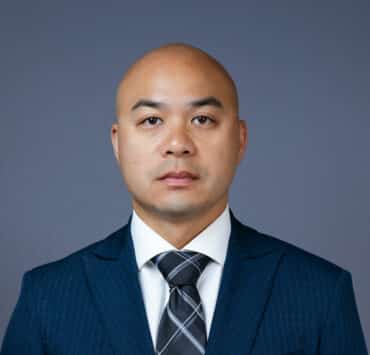|
Getting your Trinity Audio player ready... |
Since coming to Stanford Children’s Health over eighteen years ago, Kristien Karmarkar has served in roles of increasing responsibility. She’s handled charge description masters (CDM) to make sure the hospital is accurately billing patients or health insurance companies, charge capture to track all provided services, revenue modeling to forecast the hospital’s financial performance, and healthcare management to increase operational efficiency. Reflecting on nearly two decades of excellence, the current director of revenue and billing integrity is proudest of her team and the adaptable leader that she has become.
“Healthcare is constantly evolving. You’re forced to come into the unknown, which is scary for some people,” Karmarkar says. “For me, the moment I don’t know something, I’m inspired to want to know. I’ll ask all the questions and dig into all the details. I’m proud of being able to see both the big picture and the detailed lens, so I can zoom in and out to accomplish what we need to.”
That adaptability has been vital amid the changes the industry has experienced over the past decade, such as the rise of price transparency. Since 2021, several new rules and regulations have required healthcare organizations to give consumers more information about healthcare costs. Karmarkar says those efforts have had significant implications for her and her team.
“Now it’s not just about sharing what your charge master [hospital pricing list] looks like. You have to expand it to say, ‘Here’s how much you can expect to get paid from every payer.’ You also quickly learn that there are a lot of details you just can’t put into a single file that would be helpful to patients,” she says. “The revenue integrity team previously didn’t need to understand every detailed contract like this, but now we feel like we have to dive in deeper.”
“For me, the moment I don’t know something, I’m inspired to want to know.”
Kristien Karmarkar
COVID-19 and the accompanying shift to remote work represented other obvious changes. As remote work persists in the aftermath of the crisis, Karmarkar has made productivity reports and KPIs a bigger priority. Cutting-edge technology has become more prominent too. For instance, the leader says experimenting with AI will enhance her team’s ability to support the Stanford Children’s mission.
“We’re just scratching the surface and don’t have any success stories yet, but everyone agrees that it will replace our time-burdensome tasks and assist with autogenerating,” she shares. “That will free up time so our staff can focus more on those high-level thinking tasks. On the billing side, for example, if you know you need to send out a claim with certain attachments, that can be an area we can automate, which will save a ton of time.”
As a leader, Karmarkar believes in being flexible and “supporting the whole individual.” If staff members need an hour in the middle of the day to, say, attend a doctor’s appointment, they’re free to go. She believes those freedoms allow team members to be fully present when it’s time to work.
She also believes her team members are fully capable of making their own decisions “a majority of the time.” She wants them to feel confident in their own abilities.
“I have a great team full of members who know what they’re doing. I want them to feel like they own something, whether it be a project or an initiative that they can see from start to finish,” she says. “Then I can have the pleasure of publicly recognizing their efforts across the organization or with other senior leaders.”
Karmarkar has accumulated these leadership lessons from various work mentors she’s had throughout her career. One was a CFO who imparted a philosophy that continues to resonate with her.
“Several years ago, he said he felt strongly about hiring people who were stronger and smarter than him,” she recalls. “That’s part of where my leadership style and thinking stems from. I like making decisions, but I recognize that I may not have the right answer every time.”
Reflecting on her growth as a leader, Karmarkar advises young people to honor an age-old virtue: patience.
“It’s not always easy in the beginning, because you want to learn and grow. But there’s a value in patience and taking your time, not just jumping too quickly through hoops,” she says. “I’m unconventional in that I’ve been with this organization for my entire career, which isn’t uncommon at this organization. As you navigate challenges throughout that time, patience gets you through that. A position you’re aspiring to might not always be available, and you just need to take the opportunity to learn from every position you’re in.”

